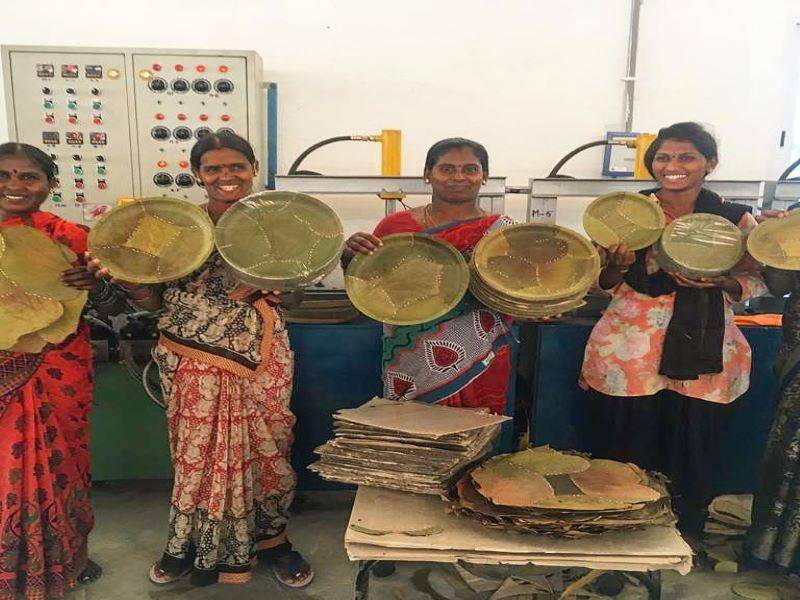
Vistaraku, a company based in India, makes biodegradable plates and bowls from the leaves of the Palash tree. The leaves have natural antibacterial and antiseptic properties, which make eating from them a sustainable and healthy option. Madhavi and Venu Vippulancha started Vistaraku out of their love for nature. Each of the plates and bowls is made by women from Siddipet, Hyderabad, and Thimmareddypally.
It is made in a circular shape, by stitching 6 to 8 plash leaves with tiny board sticks. It is popular during traditional meals, festivals and temples. It is a cottage industry in India where women work on weaving them at home in spare time.
Every day, about five to six girls make their way to Madhavi and Venu Vippulancha's 25-acre Siddipet farm. These girls, who have completed either class X or XII, start their work by collecting the leaves of the Palash tree found in abundance on the farm, stitching it together using food-grade cotton thread and starch-based glue and then finally, heat pressing this along with food-grade cardboard. That's how Vistaraku's biodegradable leaf plates are made.
The variety that Vistaraku offers:
- Breakfast plates from six to ten inches
- Dinner or lunch plates from 11 to 16 inches
- Bowls from three to six inches
For more on them, check out vistaraku.co.in
Palash is a deciduous tree species native to Indian sub-continent. It is scientifically known as Butea monosperma that belongs to the Fabaceae family of the flowering plants. Common names include flame-of-the-forest and bastard teak. It produces orange-red coloured flowers in the winter season when leaves are shed; consequently, the forest appears orange-red as if the forest is set to fire. Therefore, Palash is also called as “flame of the forest’. Palash is also the State Flower of Jharkhand. It is said that this tree is a form of Agni, God of Fire. In Telangana, these flowers are specially used in the worship of Lord Shiva on the occasion of Shivratri. In Telugu, this tree is called Modugu chettu. In West Bengal, it is associated with spring, especially through the poems and songs of Nobel Laureate Rabindranath Tagore, who likened its bright orange flame-like flower to fire. In Santiniketan, where Tagore lived, this flower has become an indispensable part of the celebration of spring. The plant has lent its name to the town of Palashi, famous for the historic Battle of Plassey fought there.















